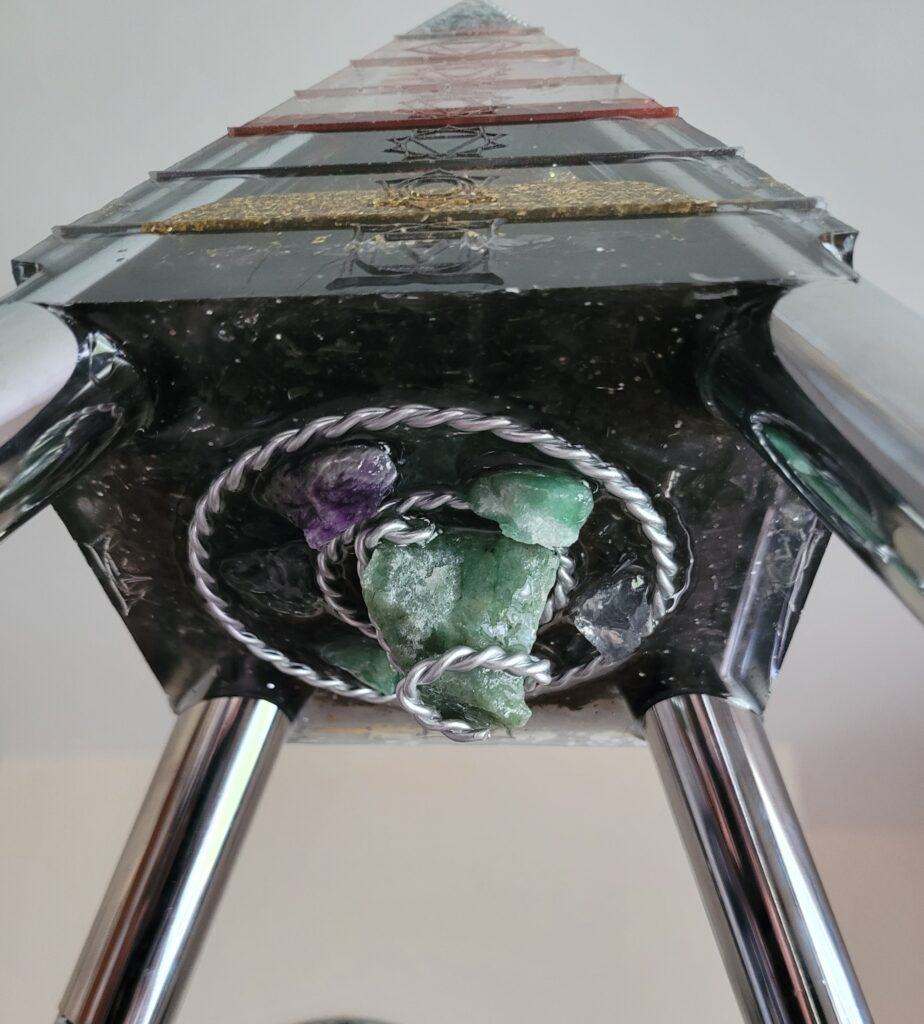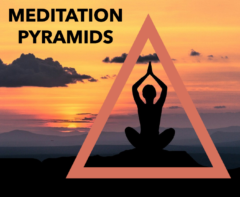
Guided meditation can be a lifesaver for folks just starting out on their meditation journey. It’s like having a personal tour guide in the mystical world of mindfulness, walking side-by-side with you and showing the ropes with ease. Navigating meditation on your own can be intimidating, but a guide is there to ease the process.
Imagine trying to focus your wandering thoughts when you’ve never done it before – tricky, right? That’s where a gentle, guiding voice can swoop in to save the day, offering you step-by-step instructions, charmingly keeping your mind from meandering off. Guided sessions are crafted to maintain your focus and ensure a deeper dive into the practice, without your mind trailing off like a lost balloon.
A big reason guided meditation is so handy for beginners is the structured nature of these sessions. They offer a clear path and a grounding presence, which is crucial for sticking through initial hurdles like restlessness or impatience. In the beginning, it can feel like your thoughts are racing in a hundred directions, but a guide can help calm that storm, offering clarity and calm like a seasoned captain steering through rough seas.
There’s something beautifully reassuring about knowing that someone with experience is steering your practice. Many folks share that hearing a calming voice supporting their practice fosters a unique connection, turning meditation from a daunting chore into something that nourishes their well-being. People often recount how, with the help of guides, their journey from beginner to confident meditator was smoother and more engaging.
Think of those moments when you struggle with focus or motivation. Real-life experiences from meditation novices often highlight how essential guided meditations can be, transforming their skepticism into enthusiasm. Many began when they stumbled upon guided sessions, which not only hooked them in but propelled their practice, proving to be a beacon of light at the start of their meditation adventure.
The Unique Benefits of Meditating Within a Pyramid

Meditating inside a pyramid isn’t just about aesthetics or novelty; there’s something alluring about combining ancient energies with modern mindfulness. The pyramid structure has long been associated with mystical properties, often believed to amplify and stabilize the energy within its space.
The pyramid’s design is not random. It’s thoughtfully structured to enhance meditation by focusing energy towards its apex. Imagine sitting within this geometric marvel, with its form guiding the energies of your meditation, creating a harmonious atmosphere where the mind can effortlessly settle. For beginners, this can make the whole exercise feel a bit more magical and deeply resonant.
Science provides intriguing insights into why pyramid shapes are thought to enhance meditation effects. Some studies suggest that the pyramid’s symmetrical shape interacts with the Earth’s magnetic field to produce a tranquil environment, something ideal for deep meditation. As you sit under the pyramid’s comforting canopy, it’s like there’s an unspoken invitation to let go, relax, and immerse in the present moment.
Pyramids are an ancient symbol of transcendental experience. Historically, they’ve been used by various cultures to aid in spiritual growth and practice. It’s fascinating how these age-old structures might still carry a sliver of those intentions. Entering a pyramid for meditation can feel like stepping into tradition infused with timeless purpose.
People who’ve meditated in pyramids share how they felt more centered and balanced, their sessions infused with an almost tangible sense of grounding. There’s a kind of serenity that wraps around you, helping channel focus gently, offering an inspiring start, especially for beginners. The stories often mention an increased level of awareness and peace, reinforcing just how impactful the choice of location and setting can be for meditation.
Why Pyramid Structures Appeal Beyond Meditation

Pyramid shapes carry a charm that goes beyond the mystical world of meditation. There’s a reason why these geometric wonders have fascinated humanity for centuries. Their pointed tops and solid bases are more than just architectural eye-candy—they’re a testament to precision and durability, making them stand out in both ancient and modern design contexts.
The geometry of pyramids isn’t just about symmetry; it’s a study of stability and sustainability. The design can be practically applied in architecture, helping create structures that are energy-efficient and naturally stable. This practical aspect makes pyramids a favorite in sustainable building discussions.
But the use of pyramids in everyday life isn’t confined to construction. They’re popping up in areas you might not expect, like wellness routines or interior design, where mini pyramids are used to influence space energy. Their shape is said to organize chaotic energies, promoting a balanced atmosphere—perfect for homes or offices.
In the world of holistic practices, people often incorporate pyramid shapes to craft environments that encourage clarity and creativity. These spaces are not just aesthetically pleasing but also optimized for inspiration, making them an ideal choice for workspaces or meditation corners.
When it comes to influencing mindspaces, pyramids provide a physical reminder to aim for new heights. This symbolism—of stability below and aspiration above—invites a mindset of grounded ambition, a refreshing blend of practicality and visionary thinking. Whether using them as architectural accents or meditation aids, pyramids stir a sense of potential and peace, catering to both body and soul in utterly seamless simplicity.


Wow, meditation pyramids sound like such a game-changer for anyone new to mindfulness!
This article does a fantastic job of unpacking why guided meditation can be such a lifesaver for beginners, especially when facing those first intimidating steps in quieting the mind.
The idea of a ‘gentle guiding voice’ to keep focus intact and make the whole experience less daunting sounds incredibly helpful, like having a personal coach for your thoughts.
But here’s where it gets super intriguing: meditating inside a pyramid! It’s amazing to think about blending ancient practices with modern mindfulness, and the concept of using pyramid energy for a deeper, more centered experience is mind-blowing.
I love how the article dives into the science and history of pyramid structures, explaining how they create an environment that seems almost designed for meditation.
Plus, the pyramid shape’s unique vibe adds a certain ‘wow’ factor that goes beyond aesthetics, creating a space that’s both calming and inspiring.
From beginners to seasoned meditators, who wouldn’t want to give this a try?
It’s not just about meditation; it’s like embracing a part of ancient wisdom in a way that feels relevant and powerful.
A beautiful read on turning meditation from a chore into a transformative journey!
Thank you, Benjamin, for the beautiful comment and very insightful response to my post. It is much appreciated.
What a really interesting read! I didn’t know much about meditation pyramids before, but this article explains their benefits so clearly. I love how it highlights the calming energy they can bring, especially for beginners just starting out with meditation. The tips on choosing the right pyramid and creating a peaceful space are super helpful. Definitely inspired to try this out. Thanks for sharing!
Hi Randi
Thank you so much for your kind words! I’m glad the article gave you a clear understanding of meditation pyramids and how they can enhance a calming meditation experience. Starting out with meditation can be such a rewarding journey, and using a pyramid can add a powerful layer of tranquility to your practice. If you decide to try one, I’d love to hear how it goes and what benefits you notice!
Kindest regards,
Alan
Hello Alan!
What a fascinating read on why meditation pyramids work so well for beginners! I never thought about the pyramid’s design actually enhancing relaxation and focus—such a unique approach to meditation. Are there specific materials that make a difference for beginners starting out with a pyramid?
I’d imagine choosing the right one could really impact the overall experience. And for someone who’s new to this, would you recommend pairing the pyramid with guided meditation or simply focusing on breathing? Thanks for opening up a new world of possibilities for beginner meditators!
Angela M 🙂
Hello Angela!
Thank you for your thoughtful comment—I’m thrilled you found the idea of meditation pyramids as fascinating as I do! The pyramid’s design does play a significant role in enhancing relaxation and focus, especially for beginners, as it amplifies and channels energy efficiently.
When it comes to materials, beginners often find aluminum or chrome pyramids a good starting point because they’re lightweight, durable, and non-allergenic (especially if you have sensitivities to materials like copper). Adding an orgonite apex can further amplify the pyramid’s energy and promote grounding and emotional balance.
As for pairing the pyramid with a practice, guided meditation is an excellent choice for beginners as it provides structure and helps keep the mind from wandering. However, simply focusing on deep, mindful breathing while inside the pyramid is also highly effective and can cultivate a more natural flow into your meditation journey.
I’m glad to hear you’re exploring this approach—it really does open up a world of possibilities! Let me know if you have more questions.
Regards,
Alan
Thank you for this insightful post! It’s amazing to see how the design of pyramids has been linked to spiritual and mystical practices across civilizations! The idea of the pyramid interacting with the Earth’s magnetic field to create a peaceful environment for meditation is fascinating. It’s inspiring to think of these structures as not just architectural marvels but also as tools for personal growth and introspection. I’ve always been curious about meditation pyramids but wasn’t sure where to start. I love that they’re perfect for beginners because they create a focused and calming space. Sitting under one truly does sound like connecting with a timeless tradition. I’d love to hear more about your personal experiences using one—what kind of results have you noticed? Do you have any recommendations for beginners on how to best use a meditation pyramid?
Thank you for your thoughtful comment and enthusiasm for meditation pyramids! You’re absolutely right—pyramids have held a mystical allure throughout history, and their connection to spiritual practices is truly fascinating. The interaction between the pyramid’s shape and the Earth’s magnetic field is something I’ve found incredibly grounding and calming during meditation.
From my personal experience, meditating under a pyramid has deepened my practice in several ways. It helps me enter a meditative state more quickly and enhances my focus by creating a serene and energetically balanced space. Over time, I’ve also noticed an improvement in my clarity of thought and an overall sense of calmness.
For beginners, I’d recommend starting with a simple practice under the pyramid, such as focusing on your breath or using a guided meditation to ease into the experience. Ensure the space is free from distractions, and consider incorporating elements like a meditation cushion or soothing scents to enhance the atmosphere. Additionally, experimenting with different placements of the pyramid—indoors or outdoors—can help you find the environment that resonates most with you.
Let me know if you’d like more tips or details about specific pyramid setups! It’s an exciting journey to explore, and I’m happy to help guide you.
Kindest regards,
Alan